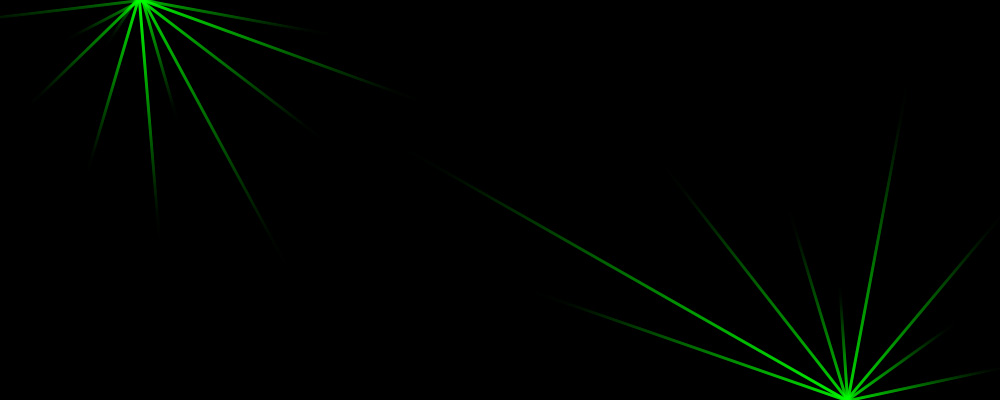The difference between a synthetic, treated, or untreated natural gemstone could mean a difference of thousands, even millions of dollars. Thus, it is no wonder that laboratories are becoming more in demand than ever. With treatments become increasingly sophisticated, gemologists and traders search for new tools to help identify stones.
How does one make the call on a completely clean spinel, with no inclusions visible, even in the microscope? Is it heated, or even a synthetic? What about an unidentified piece of rough? Here at Lotus Gemology, one instrument we turn to is the GemmoRaman-532, a Raman and photoluminescence (PL) spectrometer specifically designed for gemology. It runs on a 532 nm green laser, is fully automatic, and is primarily used to identify mineral species, but can also be used to identify synthetics and treatments in some gems. In fact, it can even identify rough, with the most minimal of preparation, with no damage or alteration to the specimen. This relatively new instrument has sparked much curiosity in the trade.
Raman spectroscopy
The Raman was named after Nobel Prizewinner Sir C.V. Raman, who discovered the Raman Effect with K.S. Krishnan. When light travels through a transparent material, a tiny amount of it is scattered and changes in wavelength. Most of this scattered light has the same wavelength as the source of excitation (the 532 nm laser, in our case). About one in ten million of the scattered photons (particles that carry electromagnetic force) shift to a different wavelength. Our eyes cannot detect this shift, but the Raman spectrometer can generate a spectrum that can be used to identify materials.
Overview
The GemmoRaman is designed by MAGI (M&A Gemological Instruments), and can be ordered from gemmoraman.com for 10,800€. Prospective buyers should note that orders require a lead-time of 60 days.
When our unit arrived, the box was badly damaged and the instrument was not well packed for an overseas journey. Thankfully it has performed without problem, but an improvement in packaging is definitely in order.
The case is constructed from black stainless steel and anodized aluminum, which is doubly sealed to guard against dust. Encased inside is a 532 nm monochromatic green laser. The case is designed with safety features that qualify it as a Class 1 laser and can be safely used without safety goggles.
For our purposes we use it in a laboratory setting, but the instrument is small enough, at approximately 16 x 25 x 18 cm and 4 kg, to be portable. It fits into a small suitcase and runs on 12 volts via 110-240V power supply making it well suited to mobile testing. The small size is also great for offices with limited desk space.
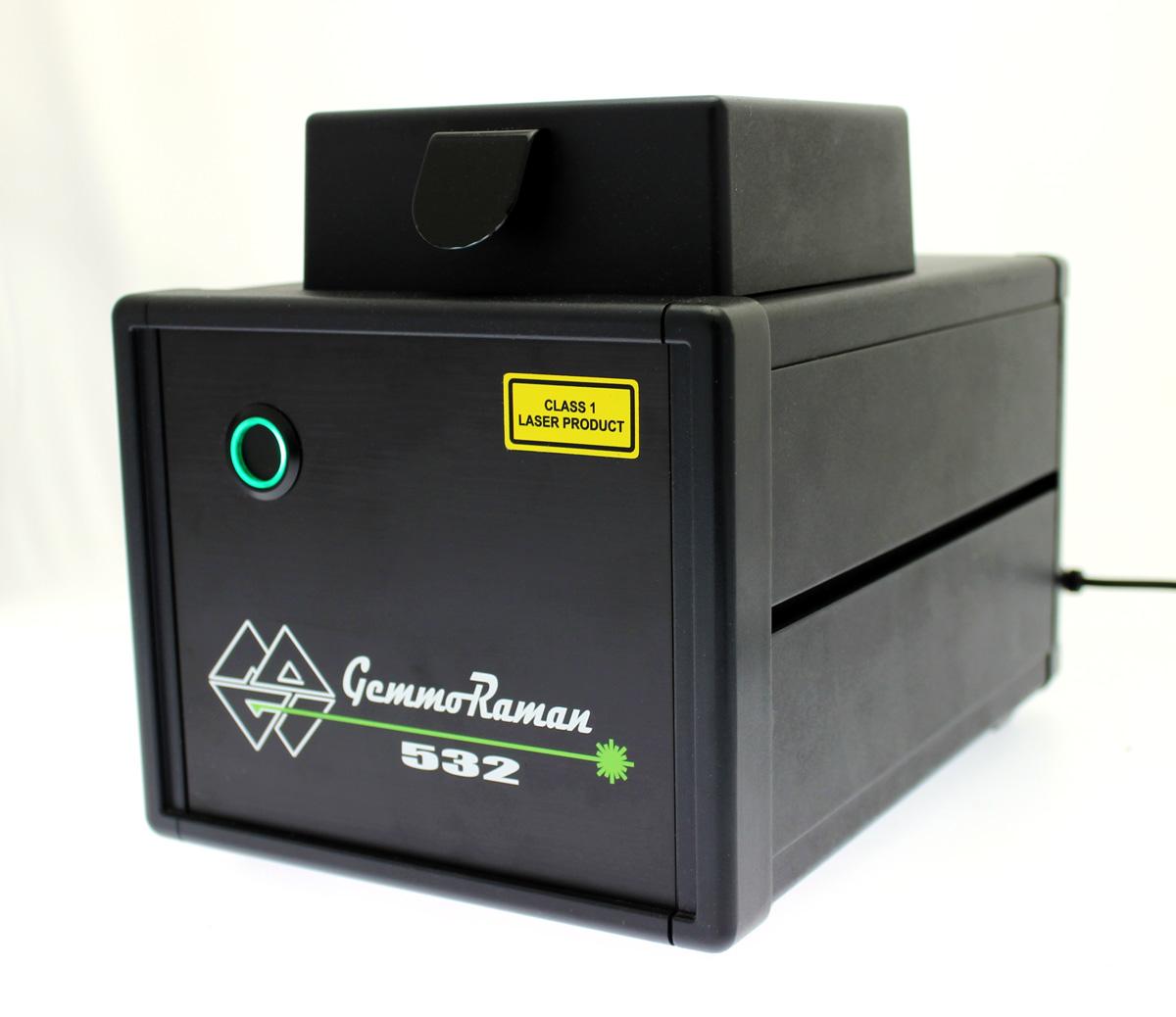 Figure 1: The new (2015) GemmoRaman-532 with the lid closed. Photo courtesy of MAGI.
Figure 1: The new (2015) GemmoRaman-532 with the lid closed. Photo courtesy of MAGI.
Getting started
The GemmoRaman’s beauty is in its simplicity. To start the instrument, twist the key to the “on” position, and then press the button, which will light up green. The software will prompt the user to calibrate the instrument. Calibrate by placing a colorless diamond of more than 0.05 ct. over the sample stage. Then either the software will auto calibrate, or the user can manually calibrate it by making adjustments on the computer.
Calibration is easy, with one flaw – a calibration diamond was not included; we were expected to supply our own. To MAGI’s (M&A Gemological Instruments) credit, they now include free-of-charge a user friendly Laser Calibration Tool, which is a small diamond set into a round piece of plastic, which aligns the diamond in the proper position over the sample stage. No more fiddling with tweezers!
Testing a sample
Once calibration is complete, the software will prompt the user to scan the material being tested. One can use the fully automatic autoscan function; experienced users have the option of performing a manual scan. To check the Raman spectrum, just place the specimen on the sample stage over the laser opening, close the lid, and test. The specimen does not have to undergo special preparation, and both rough and cut stones can be tested.
Should the spectrum become saturated, the software thoughtfully warns the user that a neutral density filter (provided) should be placed beneath the specimen to reduce the spectrum in a spectrally neutral fashion. It is this type of attention to detail that makes the GemmoRaman a joy to use.
Photoluminescence spectra (PL)
Photoluminescence is light emission from any form of matter after the absorption of photons (electromagnetic radiation). It is but one form of luminescence (light emission) and is initiated by excitation by photons.
At times, the photoluminescence (PL) of a material can mask the Raman signal, but the PL spectrum can also provide information about the material tested. The GemmoRaman allows testing of both the Raman and PL spectra. To check the PL spectrum, follow the same procedure. In many cases, the neutral density filter will be required for taking PL spectra.
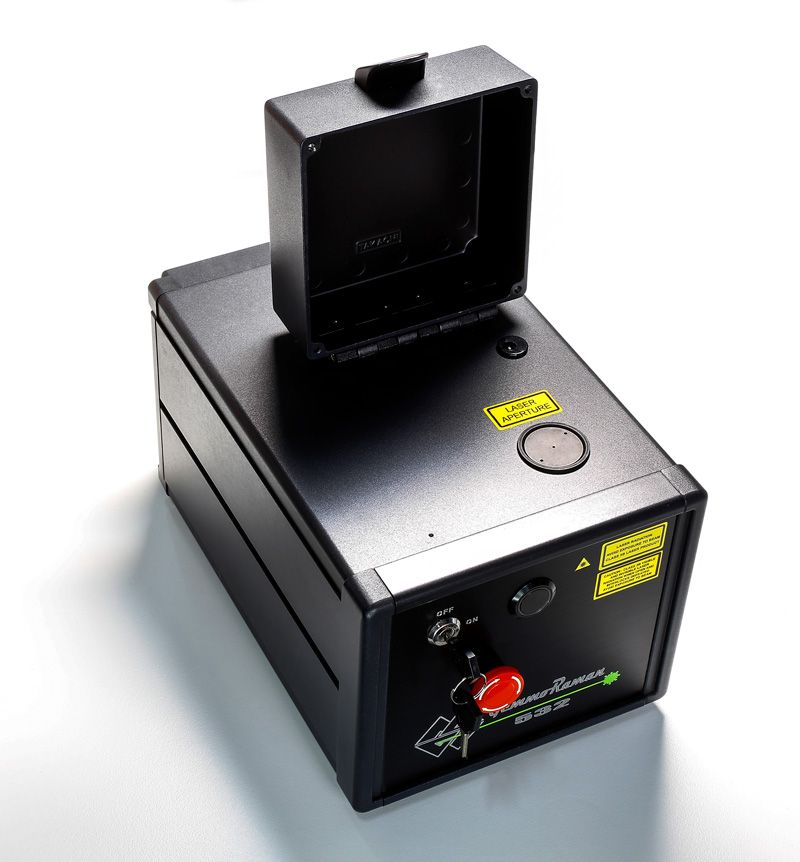 Figure 2: The GemmoRaman-532 (2014 version) with the lid open. Next to the yellow "laser aperature" sticker is the round sample stage. Specimens to be tested are placed over the center hole. Photo: E. Billie Hughes/Lotus Gemology
Figure 2: The GemmoRaman-532 (2014 version) with the lid open. Next to the yellow "laser aperature" sticker is the round sample stage. Specimens to be tested are placed over the center hole. Photo: E. Billie Hughes/Lotus Gemology
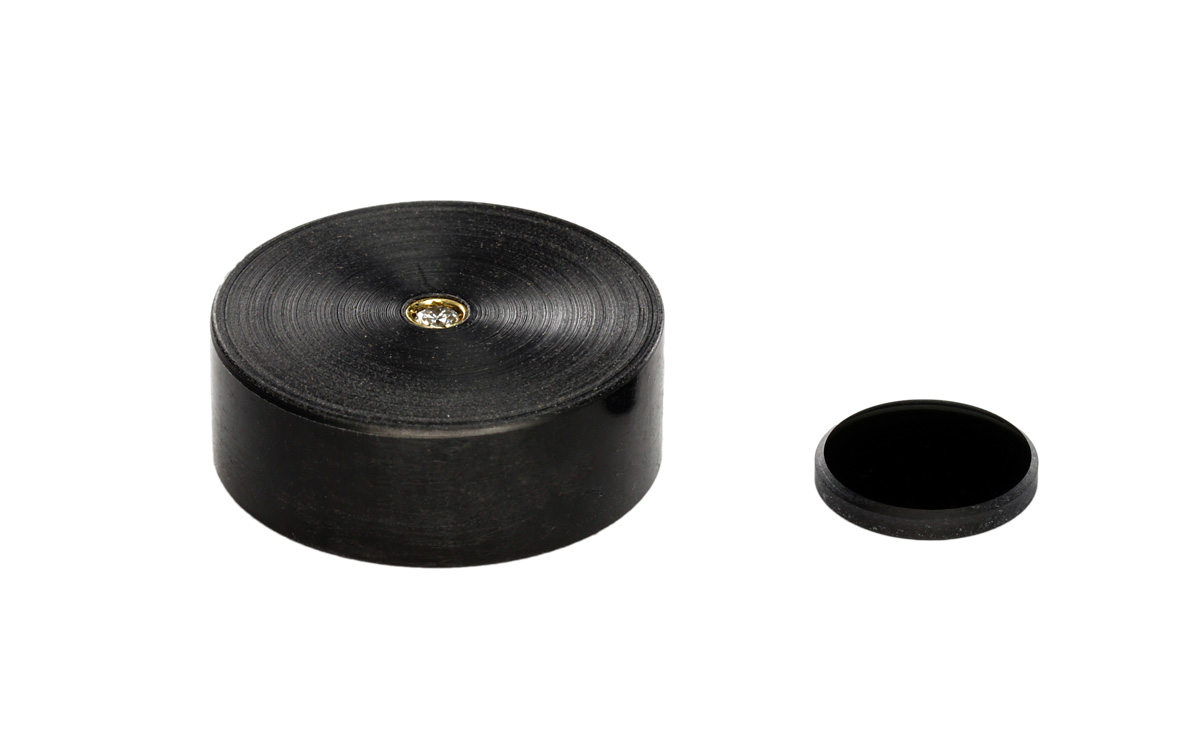 Figure 3: Left: The Laser Calibration Tool, a diamond set into a plastic holder (diameter approximately 2.5 cm).
Figure 3: Left: The Laser Calibration Tool, a diamond set into a plastic holder (diameter approximately 2.5 cm).
Right: The neutral density filter. Photo: E. Billie Hughes/Lotus Gemology
Software
The GemmoRaman runs on Windows 7, 8, or Vista, or a Mac that is running a Windows partition under Bootcamp, which is what is used at Lotus Gemology. We have not had any problems, but would welcome a native Mac version.
GemmoRaman's software itself is refreshingly easy to use. Even first-timers should be able to test specimens right away. A series of instructions pop up explaining step-by-step procedures for new users, while experienced users have the option of turning off these reminders. The default appearance has a black background with spectra appearing in colors. For users who prefer lighter backgrounds, these settings can also be changed. It’s nice to see software that is designed with the user’s ease and comfort in mind.
The other great feature of the software is that it is tailored towards gem testing. For example, when saving files, other software may have a generic name such as “title.” The GemmoRaman software has gem-centric fields such as weight, material type, and color.
The free software is updated regularly, with several updates posted on the gemmoraman.com website last year.
Reference database
MAGI provides a Raman and photoluminescence spectral library, which is updated regularly and available on their website. As of publication date, they are on the 60th update. Other databases can also be used.
Once a specimen is tested, the software compares it to the database and finds the closest reference, indicated by a percentage match. The user can browse other close matches, in cases where the first one does not seem a likely match. The different spectra appear on the screen so one can easily make comparisons. A close match is one where the peaks are in comparable locations. Peak location, rather than peak intensity, is important when comparing spectra.
While the database also includes variety names, note that this does not always show up accurately, even if the mineral is correctly identified. For example, an emerald might be identified as an aquamarine, because both are beryl. Similarly a red spinel PL spectrum might most closely match the spectrum for a pink spinel in the database.
The only problem we have encountered so far was with a heated spinel, which was misidentified as unheated. After contacting MAGI, we learned that the database’s spectrum was mislabeled. They quickly corrected the error. We understand that anyone can make a mistake, and were pleased by the responsiveness of the MAGI team in fixing the problem.
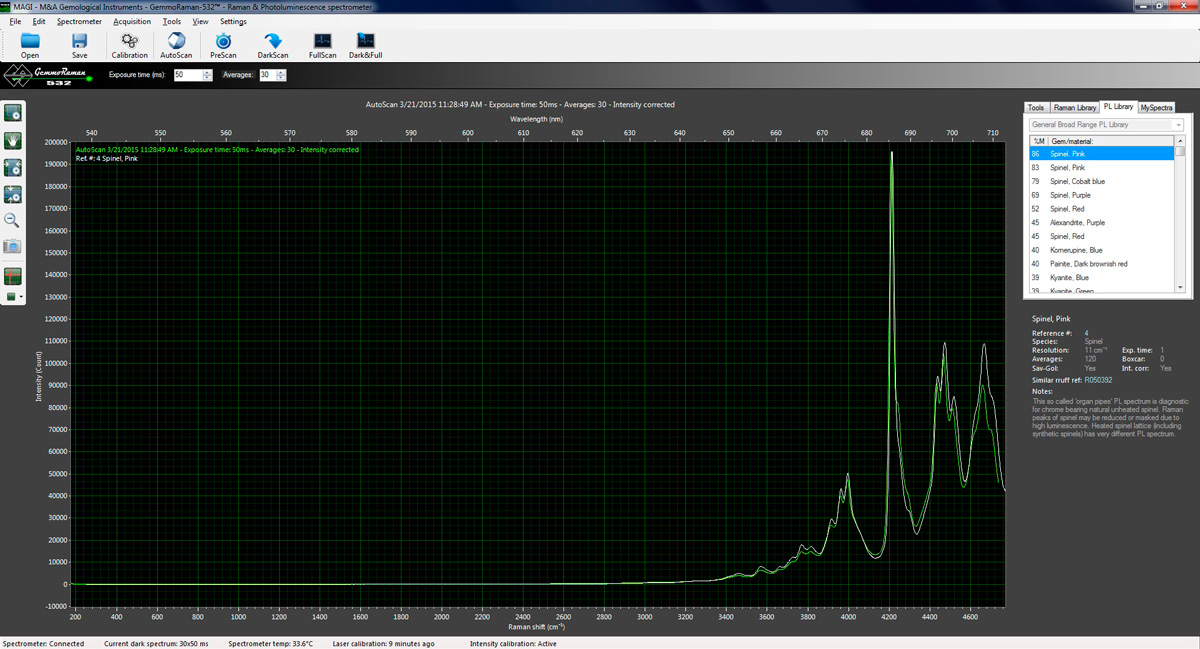 Figure 4. A screengrab of the PL spectrum of a natural, unheated pink spinel. The green spectrum is that of the specimen being tested, while the white is from the reference database. In the menu on the right users can browse different spectra for comparison. Image: Lotus Gemology
Figure 4. A screengrab of the PL spectrum of a natural, unheated pink spinel. The green spectrum is that of the specimen being tested, while the white is from the reference database. In the menu on the right users can browse different spectra for comparison. Image: Lotus Gemology
GemmoRaman for diamond
MAGI also produces add-ons tailored to users testing diamonds. Please note that Lotus Gemology does not issue reports on diamonds, thus we have not personally tested these accessories.
One is the DiaGuard, a high-speed diamond screening instrument available for 790€. It screens type Ia diamonds (natural colorless to near colorless) from type II and IaB, which may include diamonds that have undergone HPHT (high pressure high temperature) treatment or are more likely to be synthetics.
There is also a Liquid Nitrogen Kit, available for 490€, which can show stronger PL peaks in diamond than when a diamond is tested at room temperature.
GemmoRaman in action
A friend of ours who handles many rare stones heard about our GemmoRaman and brought by a couple dozen specimens to see just what it could do. After he refused to tell us what the stones were, we laid one after another on the unit and reeled off the ID's. Taaffeite. Check. Painite. Check. Scapolite. Check. Poudretteite. Check. Fibrolite. Check. Kornerupine. Check. After an hour he walked away a believer. This demonstrated just how powerful a tool this can be.
Limitations
As with all instruments, some limitations do exist. The GemmoRaman can be a great help, but cannot replace careful examination with a microscope and other standard gemological tests. For the most part, it does not differentiate between natural, synthetic, and/or treated materials (with some exceptions, such as spinel). It also may not detect very dark to black materials, composite stones, and materials that fluoresce strongly under the green laser, such as ruby. Metals also cannot be identified, although this can make it easier to test mounted stones. Artificial glass is another material that is not ideal for testing with this instrument. There are thousands of variations in glass composition, making testing impractical.
Overall
The tagline on MAGI’s website reads “Made by gemologists for gemologists,” and ultimately this is the strength of the GemmoRaman. Both hardware and software are designed with the user, and specifically, the gemologist in mind. We wish other manufacturers would adopt this attitude towards instrument design. The GemmoRaman works intuitively and quickly. What’s more, the team behind it is responsive, helpful, and continuously works on updates to make it even better. No instrument can replace an experienced gemologist, but the right tools make our work easier, faster, and more accurate. Here at Lotus, we believe the GEM is the most important part of GEM•ology, and should be the focus of our trade and our reports. MAGI has done just that in building the GemmoRaman, crafting an instrument that puts the gem first and foremost. If only the rest of our advanced testing equipment worked so well.
|
Wishlist The team at MAGI has been responsive and eager to improve their products, and it is our hope that they will consider our wishlist of features for the next version of the GemmoRaman. This is what we'd like to see in future units:
|

References
- Fritsch, E., Rondeau, B., et al. (n.d.) Raman Spectroscopy Applied to Gemmology. PowerPoint presentation.
- Nassau, K. (1981) Raman spectroscopy as a gemstone test. Journal of Gemmology, Vol. 17, No. 5, pp. 306–320.
- Scarani, A. (2015). Personal communication.
Notes
The author would like to thank Mikko Åström and Alberto Scarani of MAGI, and Simon Dussart and Tariq Mohammad for their assistance.
This article was first published in InColor magazine.
About the author
E. Billie Hughes visited her first gem mine (in Thailand) at age two and by age four had visited three major sapphire localities in Montana. A 2011 graduate of UCLA, she qualified as a Fellow of the Gemmological Association of Great Britain (FGA) in 2013. An award winning photographer and photomicrographer, she has won prizes in the Nikon Small World and Gem-A competitions, among others. Her writing and images have been featured in books, magazines, and online by Forbes, Vogue, National Geographic, and more. In 2019 the Accredited Gemologists Association awarded her their Gemological Research Grant. Billie is a sought-after lecturer and has spoken around the world to groups including Cartier and Van Cleef & Arpels. In 2020 Van Cleef & Arpels’ L’École School of Jewellery Arts staged exhibitions of her photomicrographs in Paris and Hong Kong.

